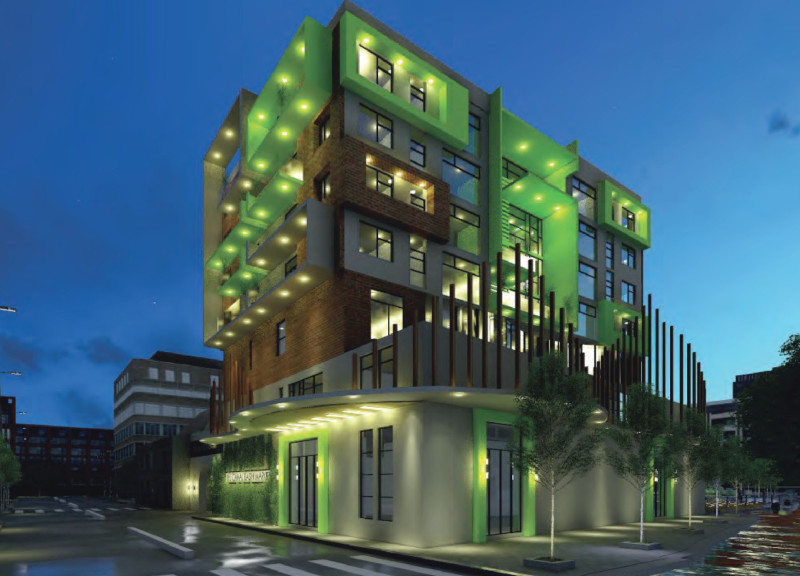5 key facts about this project
This architectural design represents a commitment to modernity without losing sight of context. The layout is carefully organized to optimize the flow of movement and interaction among its occupants, ensuring that each space is accessible and welcoming. Key areas of the design include collaborative work hubs, serene lounge zones, and open areas for community events, all thoughtfully interconnected. This spatial configuration allows for a seamless transition between indoor and outdoor environments, creating a harmonious relationship between the building and its site.
The choice of materials and construction techniques further underscores the project's thoughtful approach. High-quality concrete fortifies the structure, aligning with durability and modern building practices, while extensive glazing invites natural light, blurring the boundaries between the interior and exterior. The deliberate use of wood in various elements adds warmth and an organic touch, reflecting a commitment to sustainability that resonates with contemporary architectural trends. Additionally, steel frames support expansive open spaces, allowing for flexible configurations that adapt to diverse activities.
Among the notable features of this project is its landscaping, which serves as a crucial extension of the architecture itself. Strategic planting, pathways, and communal gardens create a lush environment that encourages outdoor gatherings and interactions. Water features, if included, enhance the sensory experience of the space, drawing both visual and auditory connections that enrich the overall atmosphere. Such carefully curated green spaces not only promote ecological benefits but also contribute to the overall well-being of individuals who engage with the architecture.
This project embraces innovative design approaches that respond directly to the characteristics of the site and the lifestyle of its users. One significant element involves the integration of renewable energy technologies, which underscores a proactive commitment to sustainability within the architectural framework. By incorporating features like solar panels or green roofs, the project minimizes its environmental impact while promoting awareness and education about energy efficiency.
Moreover, the architecture incorporates adaptive reuse strategies, where historical or existing structures are thoughtfully incorporated into the new design. This approach celebrates local heritage while bringing contemporary solutions to previously underutilized spaces, ensuring that the project honors its roots while looking toward the future.
Throughout the design process, attention to detail is evident in various architectural elements. The careful selection of furnishings within the space complements the overall design narrative, providing comfort while aligning with the aesthetic principles established by the architecture. The color palette, curated through the choices of materials and finishes, enhances the project's environmental connection, further enriching the user experience.
This architectural project not only responds to immediate functional needs but also engages with the broader context of community and environment. It stands as a model for future developments, demonstrating how thoughtful design can enhance life quality in urban settings. For those interested in exploring the depth of this project, a thorough examination of the architectural plans, sections, and innovative design ideas will provide a clearer understanding of the methodologies and narratives that breathe life into this endeavor. Engaging with these elements can offer a deeper appreciation of how architectural ideas can shape environments that are both functional and rich in character.


 Nasra Ally Rubeya
Nasra Ally Rubeya 




















